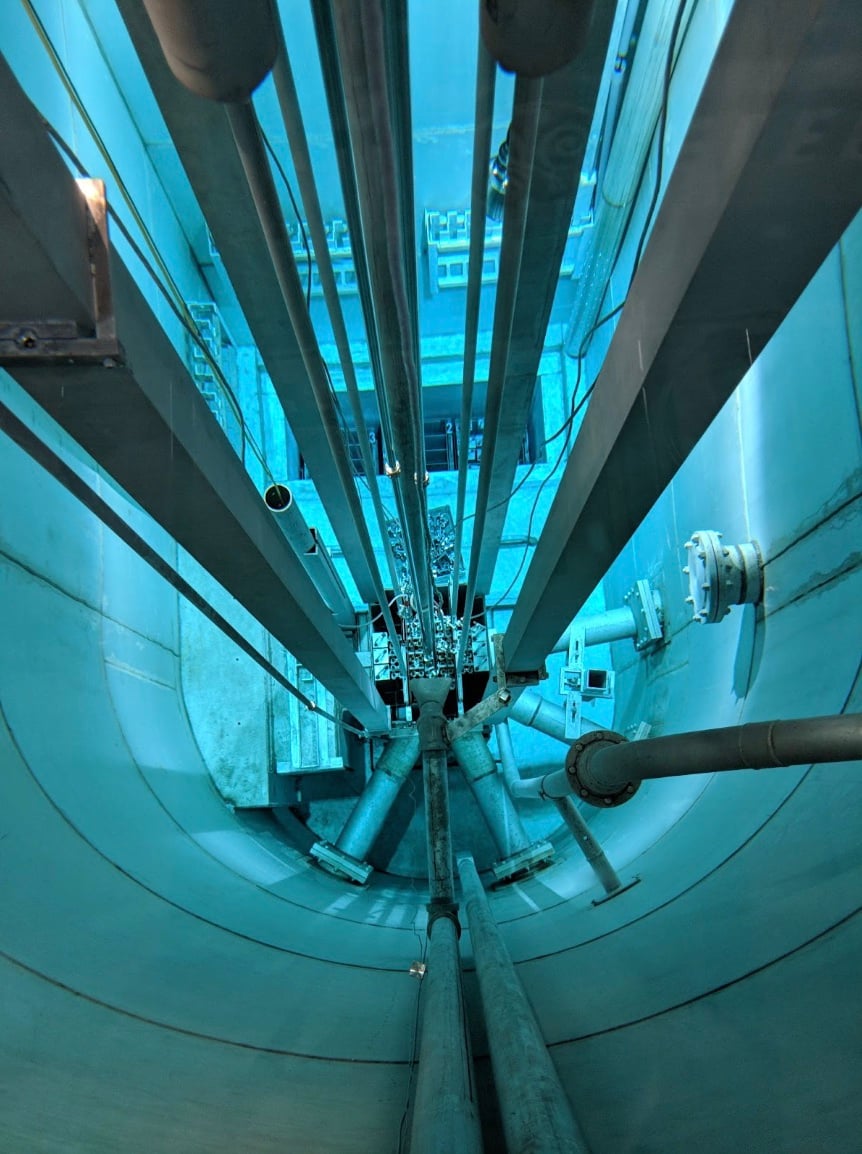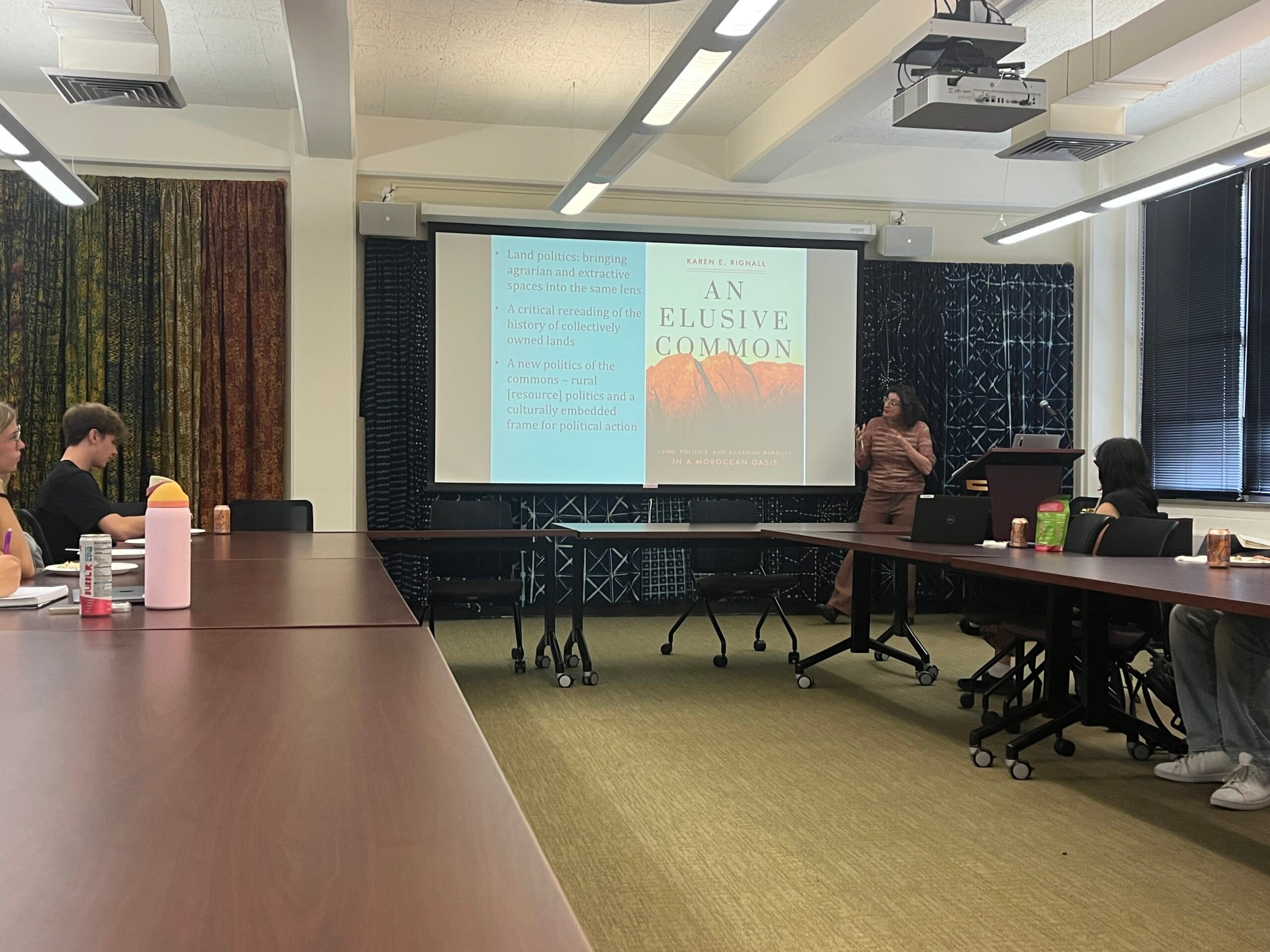- News
- Science News
UW’s research nuclear reactor allows for hands-on learning experience for engineering students
Mechanical engineering department houses nuclear reactor, provides ‘fun’ way to study, expert says

Looking down into the research reactor's pool
Renee Meiller / UW Nuclear Reactor
The University of Wisconsin Nuclear Reactor is a research reactor housed in UW’s Mechanical Engineering Department. The one-megawatt reactor does not actually produce electricity and is only around 1/3000th the size of a commercial reactor, but is used as a teaching and research tool, according to the nuclear reactor website.
Chair of the Nuclear Engineering and Engineering Physics Department Paul Wilson said the research nuclear reactor gives UW engineering students an interactive and fun way of learning and studying nuclear engineering. It can be extremely useful for the students to physically see and work with the physics from their lectures, Wilson said.
There are only around 20 research reactors scattered around the U.S., which gives UW engineering students a unique opportunity, Wilson said.
When students are taught a theory in the classroom, they learn the approximate theoretical models, according to Wilson. But when students perform lab work with the reactor, they have the opportunity to apply theory in a real world setting and close the gap between theory and practice.
Design and analysis researcher for the nuclear engineering program Ben Lindley conducts research using computer models. The research reactor serves as an invaluable educational tool for engineering students to fully learn how nuclear reactors function, Lindley said.
Looking at models in textbooks and creating and using computer models can only help students so much and it is important for students to experience experiment errors, Wilson said.
There are three main goals of the reactor besides field experience — instruction, research and service, according to Wilson.
First and foremost, the purpose of the reactor is for instructional use, Wilson said.
Students can participate in field research with the reactor in several ways, Wilson said. Students may research methods to utilize neutrons produced by the reactor and understand their interactions with other materials, such as their rates of degradation.
Some students who participate in a selective course get the unique opportunity to apply for a follow-up course that delivers the Reactor Operator Exam administered by the U.S. Nuclear Regulatory Commission, Wilson said in an email statement to The Badger Herald.
Some industries can take advantage of the reactor’s intense neutron source, Wilson said. For example, he said the UW reactor has utilized the isotopes to produce radiation doctors use across multiple medical fields.
Nuclear power is relevant in other contexts too. Though renewable energy is a great source of power, nuclear power is a necessary complement for when wind or solar produce less, Lindley said. This is especially relevant as climate change becomes a major problem our world faces.
“If we are serious about reducing carbon dioxide emissions … then nuclear energy has a big role to play in allowing us to produce clean low carbon electricity,” Lindley said.
According to the Office of Nuclear Energy, a branch of the U.S. Department of Energy, nuclear energy is a zero-emission source. In 2020, the U.S. avoided about 471 million metric tons of carbon dioxide emissions from using nuclear energy, according to the website.
By replacing fossil fuel energy with nuclear energy, it is possible to remove thousands of tons of air pollutants, which can create smog, acid rain and health issues in humans, according to the website.
The Office of Nuclear Energy website also said nuclear energy requires only one to two square miles of land for operating the average 1000-megawatt U.S. nuclear facility, which is significantly less land than other clean energy sources.
But nuclear energy also has some major challenges like waste disposal of radioactive uranium, the sustainability of materials used in the construction of the reactor and overall cost of building and maintaining a facility, Lindley said. It’s necessary to train a new generation of engineers to solve these issues.
The major difference between the UW reactor and a power reactor used for producing electricity is the amount of power produced, Lindley said. He also said that generally, power reactors create one gigawatt of energy and three gigawatts of heat for every 100 tons of uranium dioxide fuel used.
In a power reactor, there is a high power density inside the nuclear reactor core. Using its uranium dioxide fuel, the reactor acts like a giant nuclear kettle that heats water to build up large amounts of steam, which pass through a steam generator to power large turbines, Lindley said. This process is responsible for producing electricity.
Though UW’s reactor does not produce power, safety is still a priority. Wilson is also chair of the research reactor safety committee and said the licensed facility is required to have staff regularly review the reactor.
According to Wilson, there are opportunities for students interested in making modifications to the reactor, after being approved by the safety committee.
“The ideal learning outcome is gaining some intuition about where reality departs from the simple models that we teach in a classroom,” Wilson said.



